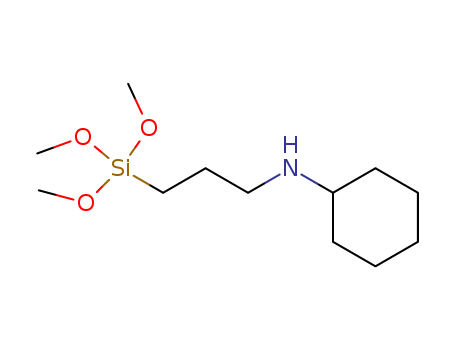TCA-L38 Titanium IV 2,2(bis 2-propenolatomethyl)butanolato, tris(dioctyl)pyrophosphato-O(CAS No. 103432-54-8) CAS NO.103432-54-8
- Min.Order: 25 Kilogram
- Payment Terms: L/C,T/T
- Product Details
Keywords
- Titanium IV 2,2(bis 2-propenolatomethyl)butanolato, tris(dioctyl)pyrophosphato-O
- 103432-54-8
- LICA 38
Quick Details
- ProName: TCA-L38 Titanium IV 2,2(bis 2-propenol...
- CasNo: 103432-54-8
- Molecular Formula: C60H123O24P6Ti.3H
- Appearance: Greenish brow, transparent viscous liq...
- Application: Coupling Agents are molecular bridges ...
- DeliveryTime: within 15 days
- PackAge: 25kg/pail
- Port: Shanghai port
- ProductionCapacity: 1000 Metric Ton/Year
- Purity: 100%
- Storage: This product should be stored in dry, ...
- Transportation: by sea or air
- LimitNum: 25 Kilogram
- Grade: Industrial Grade
Superiority
Titanate Coupling Agent TCA-L38 (CAS No. 103432-54-8) is a neoalkoxy titanate coupling agent, it has a better thermostability compared to traditional monoalkoxy titanates. Its function is similar to Ken-React LICA 38 from Kenrich Petrochemicals, Inc.
Proton reactivity allows coupling to almost all inorganic and organic substrates such as CaCO3, carbonates, carbon black, graphite, minerals, nano-particulates, silicas, silicates, metals, metal oxides, peroxides, hydrates, acetates, borates, sulfates, nitrates, nitramines, aramid, organic pigments, cellulosics, sulfur, azodicarbonamide, polymers, etc.
Coupling agent, adhesion promoter, catalyst, repolymerization catalyst, copolymerization catalyst, regrind regenerator, polymer strain and mechanical property improver, dispersion aid, deagglomerator, wetting agent, surfactant, grinding aid, plasticizer or solvent reducer, superplasticizer, low temperature flexibilizer, process aid, peptizer, flow control agent, lubricant, viscosity depressant, thixotrope, suspension aid, impact modifier, comonomer, Lewis Acid reducing agent, hydrophobic agent, cure rate modifier, blowing agent activator, intumescent activator, flame retardant, conductivity enhancer, corrosion inhibitor, anti-aging inhibitor, etc. Function depends on dosage, solubility parameters, dilution, sequencing, process conditions, substrate, polymer, other ingredients, curatives, etc. and their interaction with the neoalkoxy, octyl, pyrophosphato and titanium functionalities of TCA-L38.
Details
Abstract
Titanate Coupling Agent TCA-L38 (CAS No. 103432-54-8) is a neoalkoxy titanate coupling agent, it has a better thermostability compared to traditional monoalkoxy titanates. Its function is similar to Ken-React LICA 38 from Kenrich Petrochemicals, Inc.
Identification
Name: Neopentyl(diallyl)oxy, tri(dioctyl)pyro-phosphato titanate
Synonyms: Titanium IV 2, 2(bis 2-propenolatomethyl)butanolato, tris(dioctyl)pyrophosphato-O
CAS Registry Number: 103432-54-8
Equivalents
Ken-React® LICA 38 from Kenrich Petrochemicals, Inc.
Properties
Appearance: Greenish brow, transparent viscous liquid
Viscosity(25. Cps): <5000
Flash Point (. TCC): 140
Density(16): 1.13
Solubility: Soluble in isopropyl alcohol, xylene toluene. Reacts with DOP H2O.
Applications Performance
Coupling Agents are molecular bridges at the interface between two substrates, usually but not limited to an inorganic filler/fiber anganic polymer matrix. Titanium-derived coupling agents react with free protons at the inorganic interface resulting in the formation ofganic-titanium monomolecular layers on the inorganic surface. Additionally, the coupling agent may have up to Six Functions in the matrix-which include polymer catalysis other heteroatom effects-independent of inorganic content.
Typically, titanate-treated inorganics are hydrophobic,ganophilic,ganofunctional. Fillers may be pretreated treated in situ absent water of condensation drying techniques as needed with silanes. When used in polymers, titanates can increase adhesion; Improve impact strength mechanical properties; Reduce embrittlement; Allow higher filler loadings; Optimize particulate dispersion; Increase flow of filled unfilled polymers at lower process temperatures; Prevent phase separation; may have other effects.
Reactive Substrates
Proton reactivity allows coupling to almost all inorganicganic substrates such as CaCO3, carbonates, carbon black, graphite, minerals, nano-particulates, silicas, silicates, metals, metal oxides, peroxides, hydrates, acetates, borates, sulfates, nitrates, nitramines, aramid,ganic pigments, cellulosics, sulfur, azodicarbonamide, polymers, etc.
Some Commercial Applications
Ttreat inorganic fillers such as calcium carbonate, barium sulfate, etc, so that improved processing rheological property, higher loading of fillers, improved mechanical performance can be obtained.
Improve dispersion, hiding power coloring power fpigments, to improve anticorrosion, water resistance, flame retardance.
In high loading of aluminum hydroxide filled fiber glass reinforced polyester, not only preventing fillers precipitating in the liquid resin, but also improving flame retardance. Rubber products can be improved in tensile strength, tearing strength, elongation at break aging resistance.
Used as coupling agent not only finorganic fillers with resins, but also fnon-polar materials with polar materials.
Notice:
Its powder form capsule form are also available four customer.





![N-[3-(Diethoxymethylsilyl)propyl]ethylenediamine](http://file1.lookchem.com/300w/637/6365668.png)